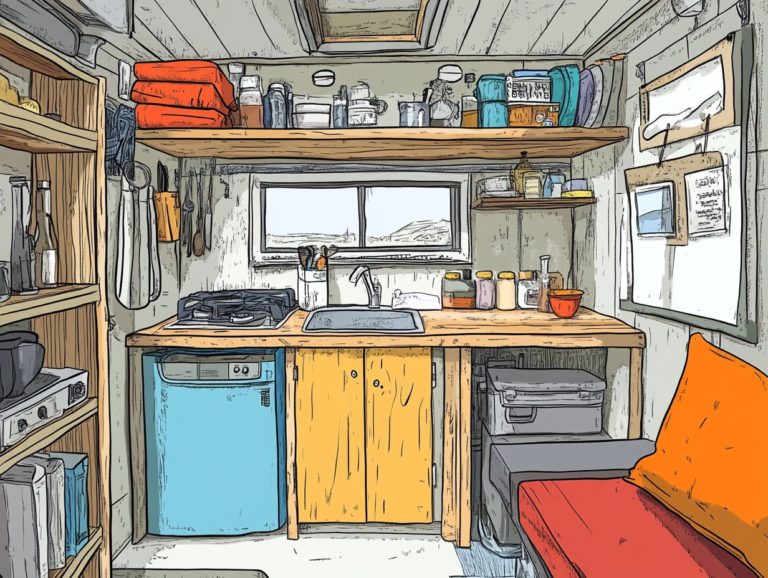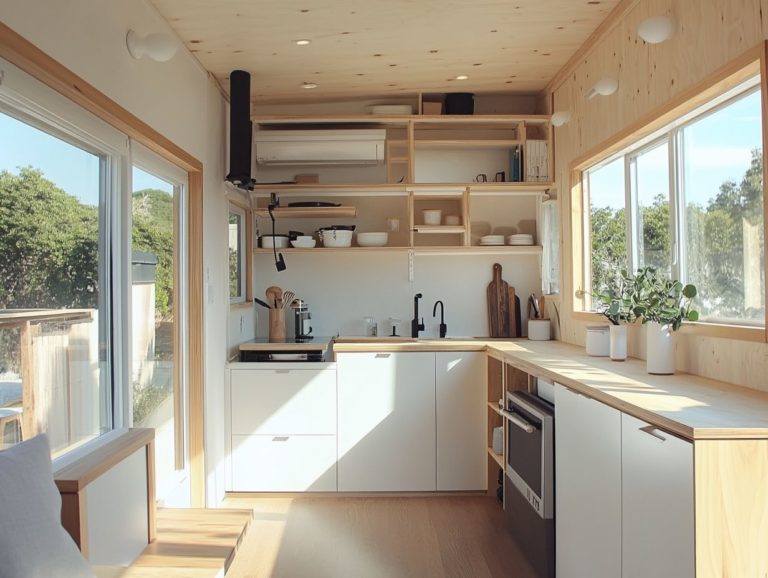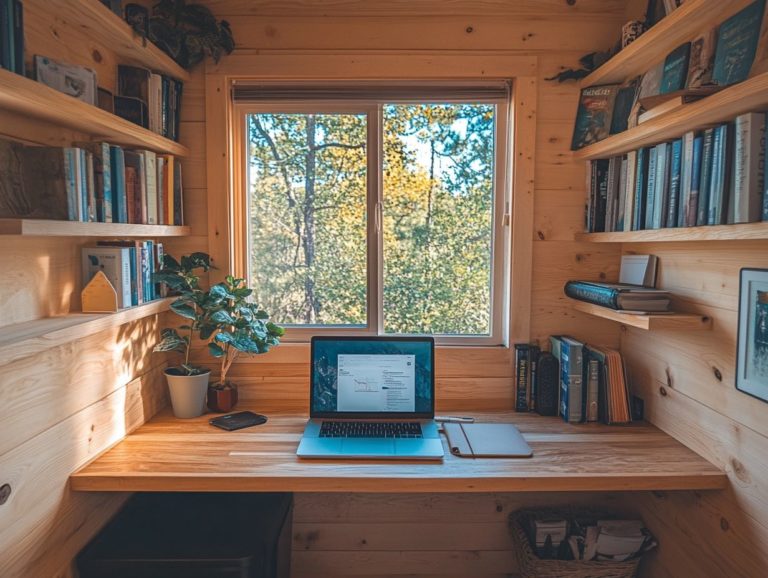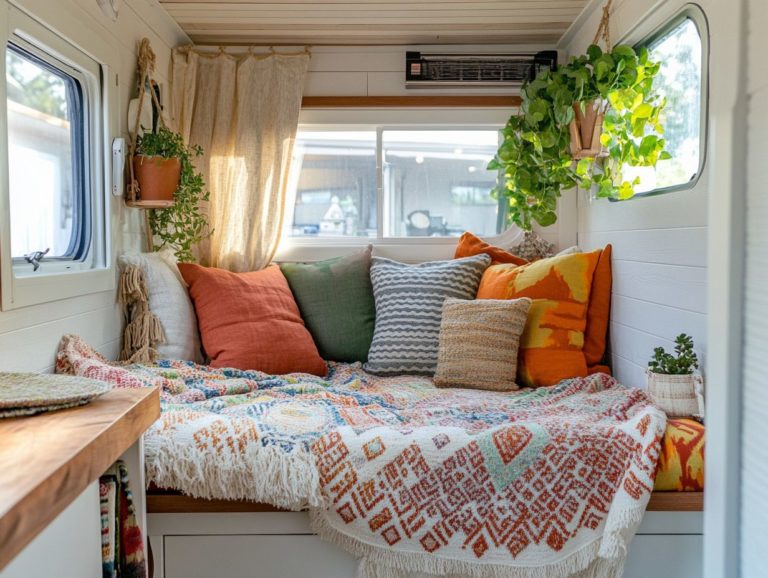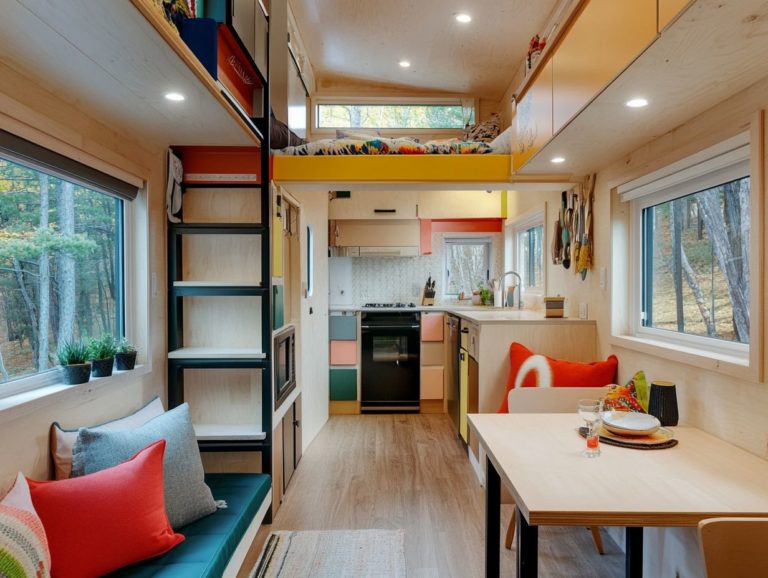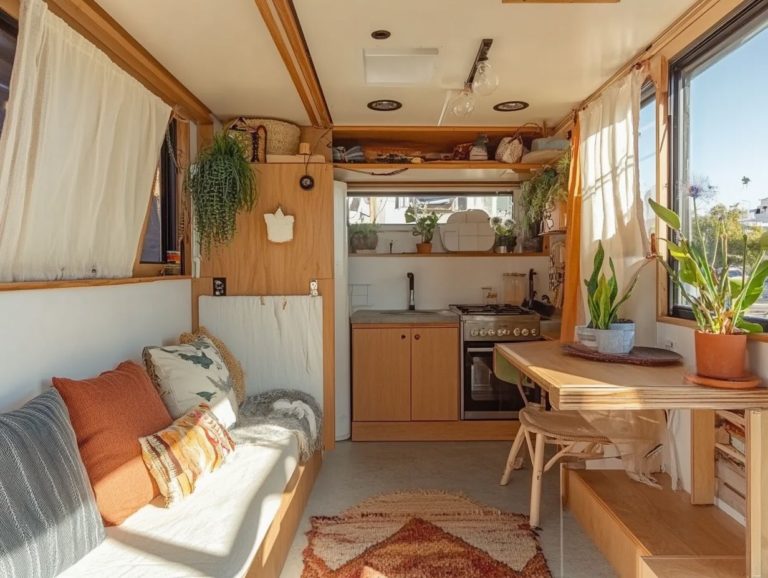Modern Tiny House Design Trends to Watch in 2024
As the tiny house movement gains momentum, modern design trends are adapting to cater to a diverse audience.
This article explores innovative features and eco-friendly elements that define contemporary tiny homes. It also looks at anticipated trends and predictions for 2024.
You ll discover the factors driving this movement, the challenges homeowners face, and practical tips for incorporating tiny house concepts into your living space.
Uncover how embracing minimalism can lead to a more sustainable and fulfilling lifestyle.
Contents [hide]
- Key Takeaways:
- Current Trends in Modern Tiny House Design
- Upcoming Trends in Modern Tiny House Design
- Factors Driving the Growth of Tiny House Movement
- Challenges and Limitations of Modern Tiny House Design
- Tips for Incorporating Modern Tiny House Design in Your Home
- Frequently Asked Questions
- Curious about the top modern tiny house design trends for 2024?
- Want to know how sustainable design will play a role in modern tiny houses in 2024?
- What are some popular materials for modern tiny house designs in 2024?
- Will there be any changes in the layout of modern tiny houses in 2024?
- How will technology be incorporated into modern tiny house designs in 2024?
- Curious about design trends specific to tiny houses on wheels in 2024?
Key Takeaways:
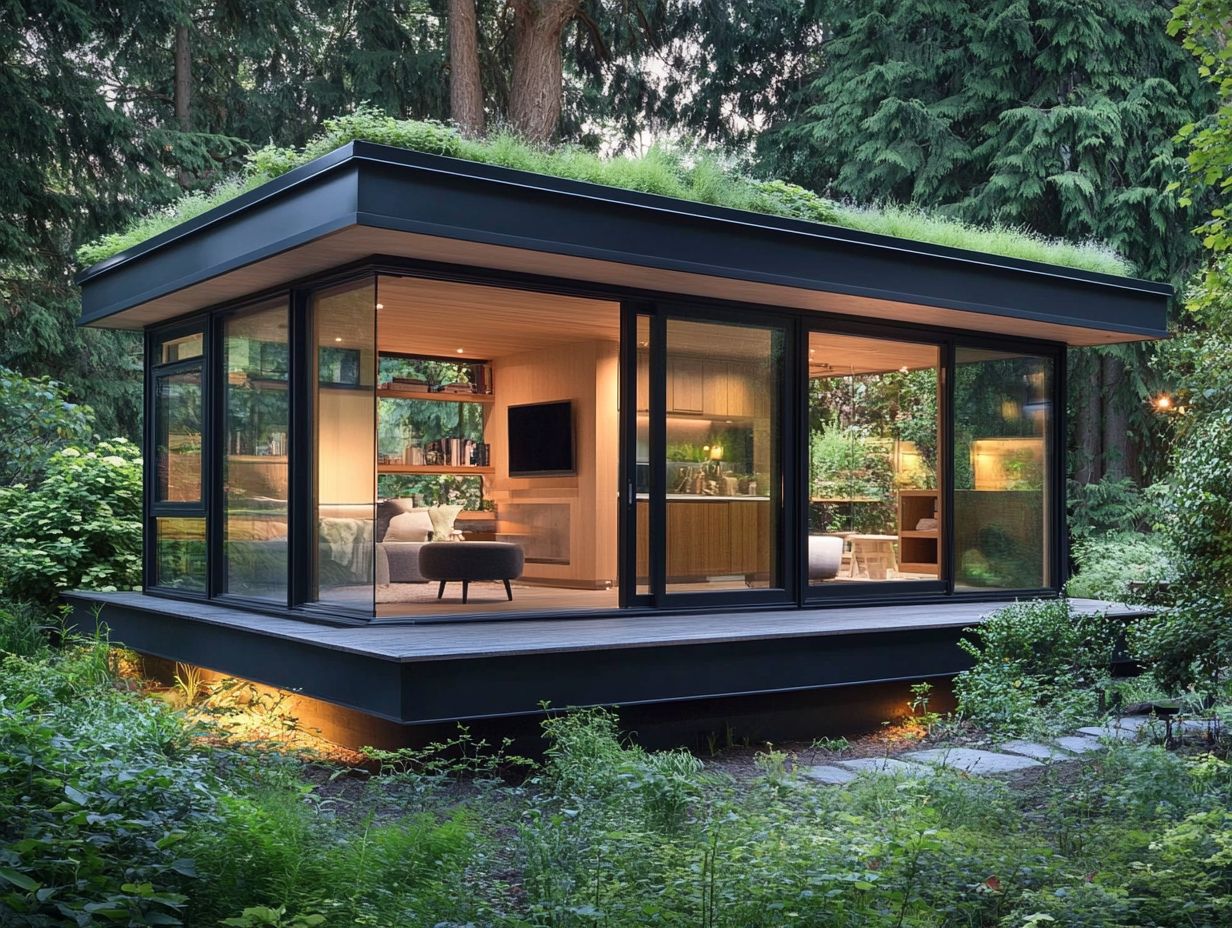
- Innovative features and sustainable designs are key trends in modern tiny house design.
- Economic, social, and environmental factors are driving the growth of the tiny house movement.
- Consider practical tips to incorporate modern tiny house design in your home.
Defining the Concept of Tiny Houses
Tiny houses invite you to enjoy a modern, minimalist lifestyle that emphasizes efficient use of space and champions eco-friendly living through sustainable materials and innovative designs.
These compact homes invite you to embrace simplicity and functionality, making them perfect for those looking to reduce their carbon footprint and live more intentionally.
The tiny home movement goes beyond reducing square footage; it enhances your quality of life through thoughtful interior design and smart technology integration.
This movement is rooted in a heightened awareness of environmental issues and a longing for a simpler lifestyle, fostering a sense of community and connection with nature.
Today s tiny houses often feature eco-friendly materials like reclaimed wood and energy-efficient appliances, making sustainable living practices more attainable than ever.
Their efficient layouts showcase aesthetic appeal and strike a balance between modern design and the charm of handcrafted interiors.
The allure of tiny homes reflects a cultural shift toward intentionality, where every element serves a purpose, delivering both beauty and functionality within a compact footprint.
Current Trends in Modern Tiny House Design
Modern tiny house design in 2024 showcases innovative trends that beautifully merge functionality with aesthetic allure, meeting the evolving needs of homeowners.
By prioritizing natural light, smart storage solutions, and technology, designers are using multi-purpose furniture to optimize space and enhance your living experience.
This integration of elements elevates interior design and promotes a sustainable lifestyle, perfectly embodying the tiny home ethos of simplicity and efficiency.
Innovative Features and Design Elements
Innovative features in modern tiny house design encourage you to embrace design features that connect your home with nature, creating a sense of calm and well-being.
By using sustainable materials and eye-catching ceilings, you can create interiors that stand out and promote environmental responsibility.
The use of textured fabrics enhances the sensory appeal of these homes, allowing you to craft character-rich interiors that challenge traditional notions of compact living.
These thoughtful design choices contribute to both aesthetic beauty and a deeper emotional connection with your environment.
Large windows invite natural light and views of lush greenery, effectively blurring the lines between indoor and outdoor spaces.
Sustainable materials like reclaimed wood and bamboo provide durability while minimizing your environmental footprint.
Incorporating textured rugs and cushions adds warmth and comfort, transforming small spaces into inviting retreats.
This harmonious blend of nature-inspired elements and eco-friendly practices enhances your overall living experience, making tiny homes a delightful expression of your personal style.
Ready to explore tiny house living? Dive into resources and consider adopting a lifestyle that emphasizes sustainability and simplicity!
Sustainable and Eco-Friendly Designs
Sustainable and eco-friendly designs are leading the charge in modern tiny house development. They focus on materials that minimize environmental impact and promote a green lifestyle.
Homeowners are increasingly turning to eco-friendly materials like recycled wood, bamboo, and low-VOC paints, which are paints that have fewer harmful chemicals. These choices not only create a healthier living environment but also elevate the aesthetic charm of their homes.
Embracing smart technology complements this sustainable approach. It allows for efficient energy use and a reduced carbon footprint.
Along with these materials, features like solar panels and efficient water systems can significantly lower utility bills and reliance on non-renewable resources. By maximizing natural light and optimizing space, these designs encourage a simpler yet intentional lifestyle that resonates with eco-conscious values.
Ultimately, by adopting sustainable practices in tiny homes, you ll find yourself part of a community of like-minded individuals committed to environmental stewardship. It demonstrates that smaller can indeed be better when it comes to living in harmony with nature.
Upcoming Trends in Modern Tiny House Design
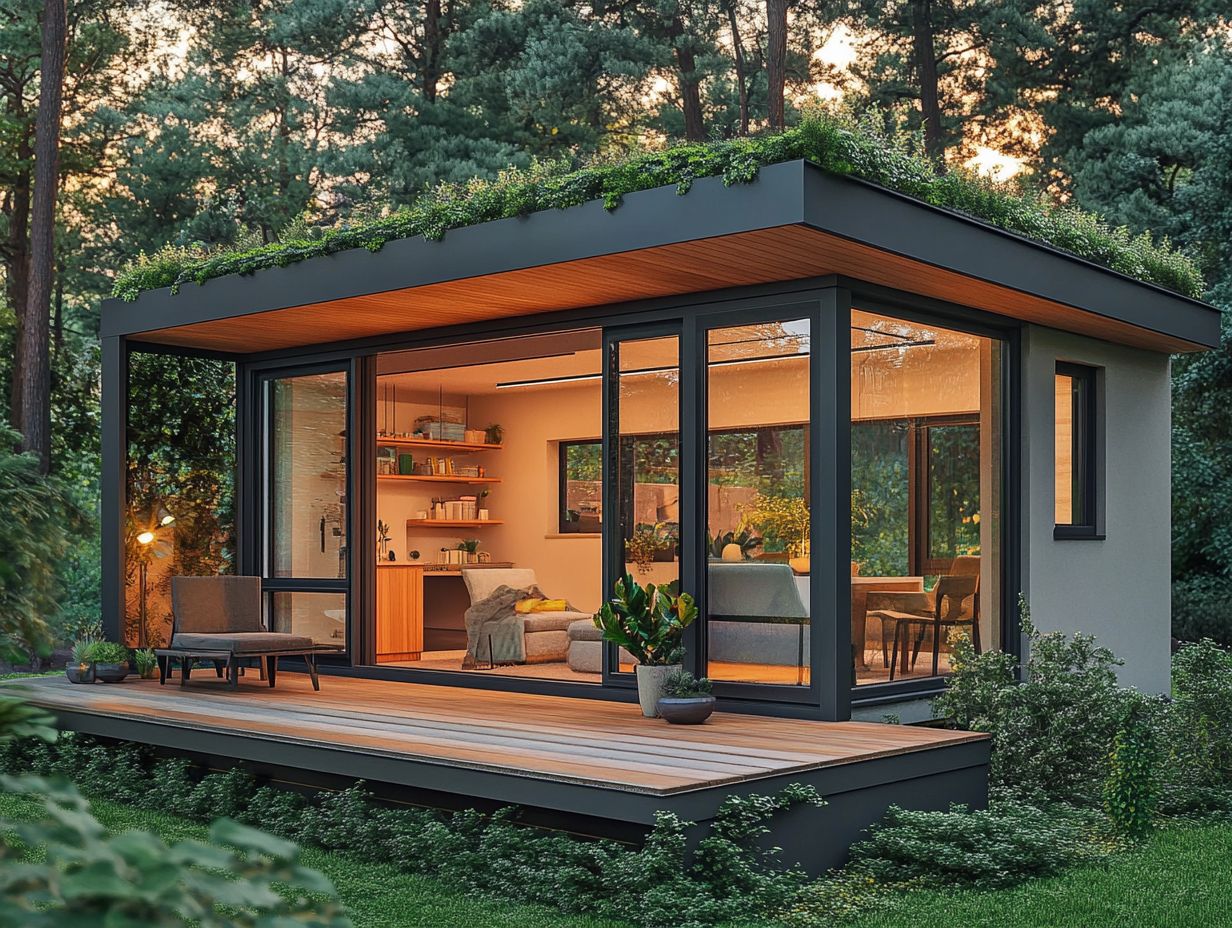
As you look ahead, the trends in modern tiny house design for 2024 promise to embrace a harmonious blend of design that connects with nature, jewel tones, and warm minimalism. This will reshape your perspective on compact living.
This year, homeowners are prioritizing designs that nurture a connection with nature, using earthy tones and organic materials to craft tranquil, inviting spaces.
The infusion of jewel tones will bring a vibrant touch, while warm minimalism will highlight simplicity and functionality. It reflects a deeper appreciation for quality over quantity in your living environment.
Predictions for 2024
Predictions for 2024 indicate a remarkable shift toward integrating smart home technology into tiny house designs, enhancing both comfort and efficiency in compact living spaces.
This evolution will simplify your daily tasks while seamlessly incorporating energy-efficient systems that promote sustainability.
Exciting design features are on the horizon! These features will maximize natural light through thoughtfully placed windows and open layouts, creating an airy ambiance even in smaller areas.
The emerging trend of dopamine decor will bring vibrant colors and playful patterns into these homes, cultivating an uplifting atmosphere. By weaving together these innovative elements, future tiny houses will cater to your desires as a modern homeowner, offering a perfect blend of style and sustainability. To achieve this, consider using the best tiny house design software of 2024 to help you live comfortably while minimizing your ecological footprint.
Factors Driving the Growth of Tiny House Movement
The rise of the tiny house movement is a fascinating blend of economic, social, and environmental factors that resonate deeply with your lifestyle choices. As housing costs soar and economic uncertainty looms, you may find yourself exploring more affordable housing solutions.
The allure of a simpler life beckons, encouraging you to consider tiny homes as a way to minimize material possessions and live with intention.
Social movements are pushing for sustainability and environmental awareness. Tiny houses present a compelling option for those like you who wish to reduce their ecological footprint and embrace the principles of green living.
Economic, Social, and Environmental Factors
Economic factors are pivotal in driving the tiny house movement. Soaring housing prices nudge many toward affordable alternatives like tiny homes.
Social dynamics reveal a burgeoning interest in community living, minimalism, and sustainable practices, all of which resonate with the ethos of tiny living.
Environmental concerns, such as climate change and resource depletion, inspire a growing number of individuals to select sustainable materials and eco-friendly designs, which help to reduce waste and foster harmony with nature.
The skyrocketing costs of traditional homes have rendered homeownership elusive for many, prompting a turn toward smaller, cost-effective solutions like tiny houses. This trend is often intertwined with a yearning for financial freedom; fewer expenses translate to less debt and a greater potential for savings.
The allure of tight-knit communities draws in those weary of the isolation that often plagues larger suburban developments. As awareness of environmental challenges heightens, you may find yourself increasingly interested in minimizing your carbon footprint.
This entails choosing energy-efficient designs and investing in renewable resources, thereby contributing to a broader movement toward sustainability in society.
Challenges and Limitations of Modern Tiny House Design
Despite the rising allure of tiny homes, you ll encounter a range of challenges and limitations that require careful consideration for a successful transition to compact living.
From navigating zoning regulations (laws that define how land can be used) and financing obstacles to seeking innovative storage solutions, the journey to tiny home ownership can be anything but straightforward.
Moreover, balancing contemporary design aesthetics with traditional principles presents its own set of unique challenges, compelling both designers and homeowners to reevaluate their approach to space, functionality, and comfort in these smaller environments.
Addressing Common Concerns and Issues
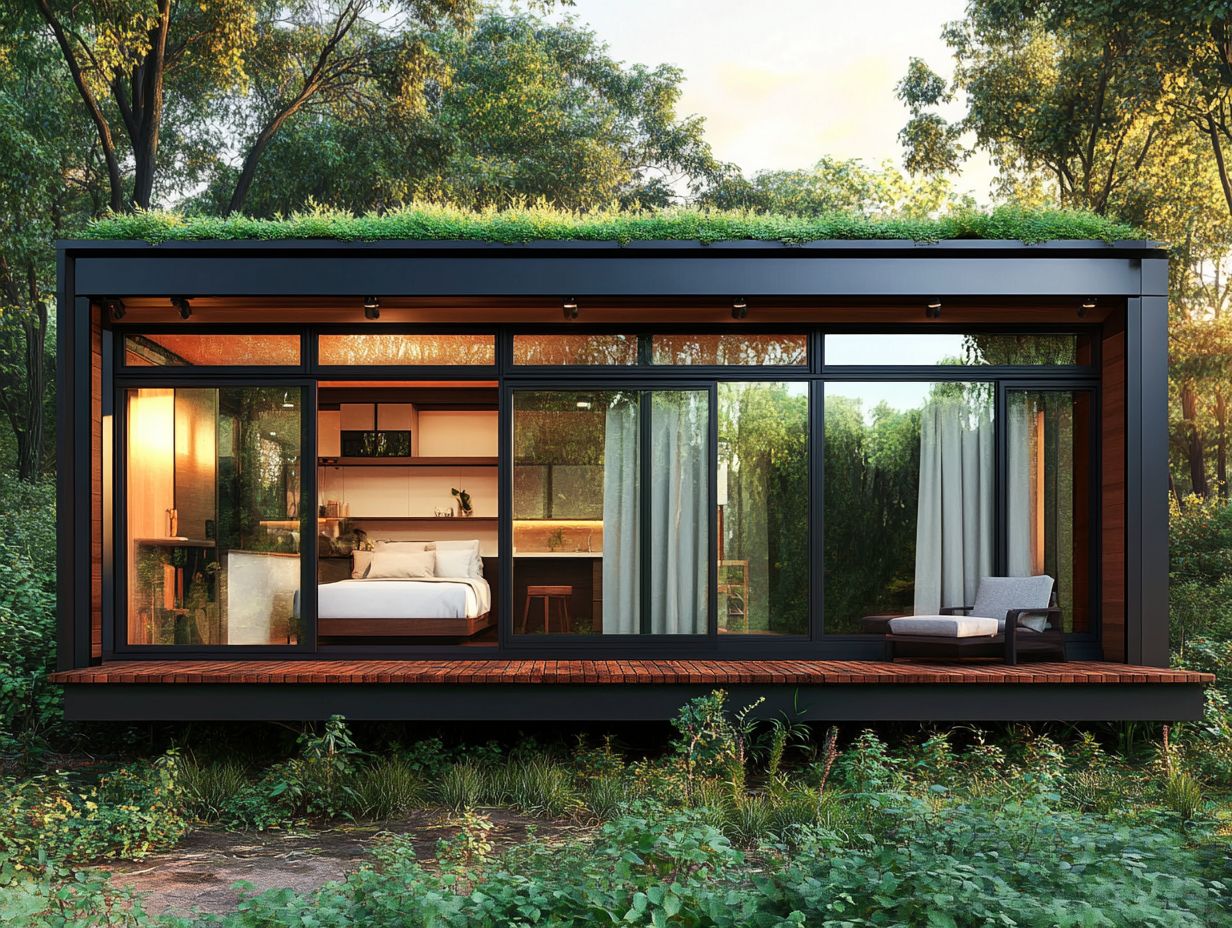
Addressing common concerns surrounding tiny homes means tackling issues such as space limitations, the absence of traditional amenities, and the integration of sustainable materials.
You may worry about clever storage solutions that accommodate your needs without making you feel cramped.
Navigating the regulatory landscape and ensuring compliance with local building codes can be quite daunting, making it essential for you, as a potential tiny home owner, to educate yourself about your rights and options.
Along with these challenges, you likely seek efficient solutions that allow you to maximize every square inch of your compact living space. Integrating multifunctional furniture think foldable tables and Murphy beds can significantly enhance both functionality and comfort.
Choosing reclaimed or eco-friendly materials not only supports sustainability but also adds unique character to your home.
Understanding local regulations related to zoning and permits is crucial, as many areas impose specific restrictions on tiny home construction. This highlights the importance of thorough research and community engagement as you embark on this unconventional lifestyle choice.
Tips for Incorporating Modern Tiny House Design in Your Home
Incorporating modern tiny house design concepts into your home demands thoughtful planning and a discerning eye for detail, making practical advice crucial for successful execution.
By emphasizing clever storage solutions, maximizing natural light, and embracing multi-purpose furniture, you can craft inviting spaces that echo the tiny home aesthetic while preserving comfort and functionality.
These strategies empower you to integrate elements of tiny living, regardless of your home’s size, championing a lifestyle that celebrates simplicity and efficiency.
Practical Advice for Implementing Tiny House Concepts
Implementing tiny house concepts in your home is entirely within reach with practical advice that highlights sustainability and design efficiency. Consider weaving in design elements that connect with nature think indoor plants or enhancements that maximize natural light to cultivate a calming atmosphere.
By choosing sustainable materials for your furnishings and decor, you not only support eco-friendly practices but also elevate your home’s overall aesthetic. This allows you to live stylishly and responsibly.
To streamline your space, explore furniture that has multiple uses. For example, a coffee table that doubles as storage can declutter your living area while adding both style and utility.
Embrace innovative decor strategies like vertical gardens or wall-mounted shelves brimming with greenery. These can visually expand your space and invite the outdoors inside.
Consider color palettes inspired by natural landscapes. These foster tranquility and harmonize beautifully with the essence of tiny living.
By blending these concepts, you can truly embody the spirit of sustainable and efficient design in your home.
Frequently Asked Questions
Curious about the top modern tiny house design trends for 2024?
In 2024, we can expect to see a rise in sustainable and eco-friendly features, multi-functional furniture, and innovative storage solutions in modern tiny house designs.
Want to know how sustainable design will play a role in modern tiny houses in 2024?
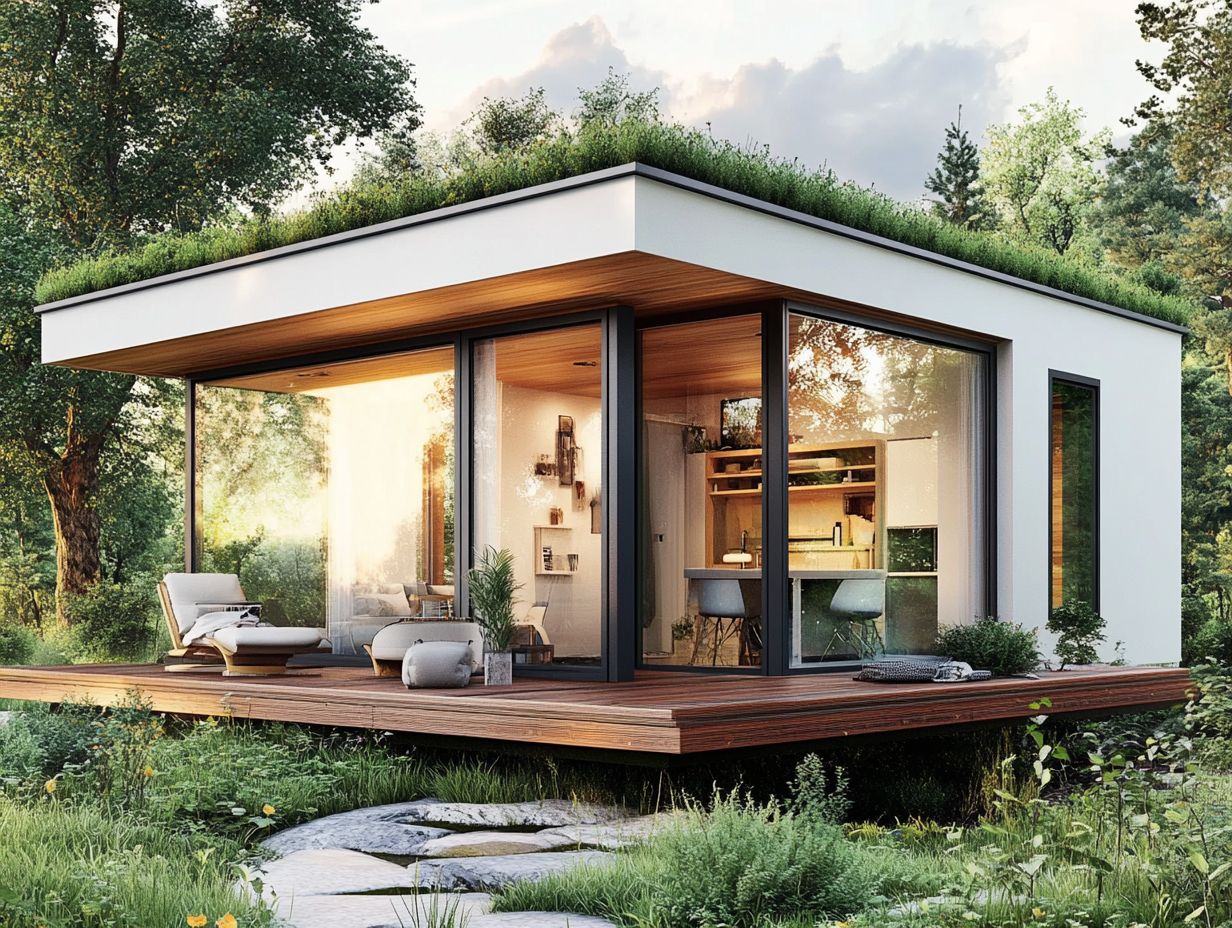
Sustainable design will continue to be a major trend in modern tiny houses in 2024. Features like solar panels, rainwater harvesting systems, and energy-efficient appliances are becoming more common.
What are some popular materials for modern tiny house designs in 2024?
In 2024, we can expect to see a mix of natural and modern materials in tiny house designs. Look for reclaimed wood, metal accents, and large windows to maximize natural light.
Will there be any changes in the layout of modern tiny houses in 2024?
In 2024, we may see a shift towards more open floor plans in modern tiny house designs. Expect multi-functional spaces that can easily adapt to different needs.
How will technology be incorporated into modern tiny house designs in 2024?
In 2024, we may see an increase in smart home technology in tiny houses. Look for voice-activated controls, energy monitoring systems, and remote-controlled features for convenience and efficiency.
Curious about design trends specific to tiny houses on wheels in 2024?
In 2024, we can expect to see a rise in off-grid capabilities for tiny houses on wheels. Features like composting toilets, off-grid solar systems, and greywater recycling are becoming more popular.

